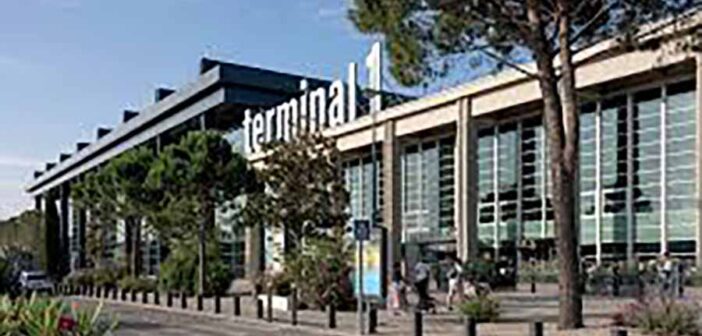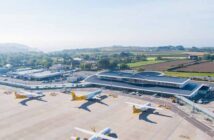Marseille Provence Airport, known as MRS, offers a pleasant and efficient entry point to the sun-soaked Provence-Alpes-Côte d’Azur region. Located 27 kilometres northwest of Marseille’s city centre, this mid-sized international airport connects travellers to over 120 destinations across Europe, North Africa, and beyond, making it a practical hub for both leisure and business visitors. With modern facilities and a straightforward layout, it provides a welcoming experience for those exploring the south of France.
The passenger experience at Marseille Provence is generally smooth, though it varies between its two terminals. Terminal 1, serving full-service airlines like Air France, BA, and Royal Air Maroc, is modern and well-equipped, with air-conditioned spaces and ample seating. Terminal 2, dedicated to low-cost carriers like Ryanair and easyJet, is smaller and more basic, with travellers occasionally noting limited seating and outdated facilities. Immigration and baggage claim in Terminal 1 typically take 30 to 45 minutes, while Terminal 2 can see longer queues, especially during peak hours. Passengers are advised to arrive two hours early for domestic flights and three for international ones to account for check-in and security, which can be slowed by manual boarding pass scans or equipment issues.
Access to the airport is straightforward, with several transport options linking it to Marseille and nearby cities. The Navette Marseille Aéroport shuttle (Line 91) runs every 15 to 20 minutes to Marseille’s Saint-Charles train station, taking about 30 minutes and costing around £7. A free shuttle from platform 5 connects to Vitrolles-Aéroport Marseille Provence train station, where trains to Marseille or other destinations like Aix-en-Provence and Avignon depart regularly, with a 15 to 20-minute ride to the city centre.
Taxis, available outside Terminal 1, cost approximately £40 to Marseille, while car rental agencies like Avis, Hertz, and Sixt operate from the arrivals hall. The A7 motorway provides a quick 25 to 30-minute drive to the city, though traffic can build during rush hours.
The airport’s layout is clear, with Terminal 1 split into Hall A (non-Schengen) and Hall B (Schengen), and Terminal 2 handling low-cost intra-Schengen flights. The terminals are separate but within a short 150-metre walk outdoors. Signage is generally clear, though some travellers report confusion in Terminal 2 due to poor directions for baggage drop or gate assignments. During peak times, such as mornings or weekends, congestion at security and passport control can slow progress, particularly in Terminal 2’s older facilities. A recent renovation of Terminal 1, completed in 2024, has improved capacity and comfort, adding self-service kiosks for smoother check-in with airlines like Air France and KLM.
Dining and retail options cater to most needs. Terminal 1 offers a range of eateries, including Paul Bakery for quick pastries and Le Grand Comptoir for French cuisine, alongside duty-free shops selling local wines, chocolates, and luxury brands like Hermès. Terminal 2’s offerings are more limited, with basic cafes and a small duty-free area, and no 24-hour options are available. Travellers often suggest grabbing a meal in Marseille for more variety. Free high-speed Wi-Fi, accessible with two clicks via the “Airport-Free-Wifi” network, is available throughout both terminals, though speeds may dip during busy periods.
Facilities are well-suited for traveller comfort. Currency exchange counters and ATMs are scattered across the terminals, and a medical centre in the arrivals area handles minor issues. The Luberon Lounge in Terminal 1 provides a relaxing space with complimentary food, drinks, and Wi-Fi for a fee, accessible to all passengers. Those with reduced mobility can request assistance through their airline, with ramps and lifts ensuring accessibility. Luggage storage is available, but there are no smoking areas or showers. Lost and found services, managed by Bag Mobile in Terminal 1, allow online declarations for misplaced items.
On-time performance is generally solid, with an average delay of around 30 minutes for departures, according to recent data. Real-time flight updates are available via the airport’s website, mobile app, or in-terminal displays. Delays are often caused by high passenger volumes during peak seasons, weather disruptions, or technical issues, particularly in Terminal 2’s older infrastructure. Air traffic control constraints across Europe can also affect schedules, so checking flight status before heading to the airport is wise.
Marseille Provence is not a major hub, focusing on point-to-point flights, so connections are limited. However, passengers transferring between terminals for domestic-to-international flights benefit from a shuttle service, though they should allow extra time for security and immigration, especially for non-Schengen destinations. The airport’s compact size makes transfers manageable, but manual processes, like baggage drop in Terminal 2, can add time.




